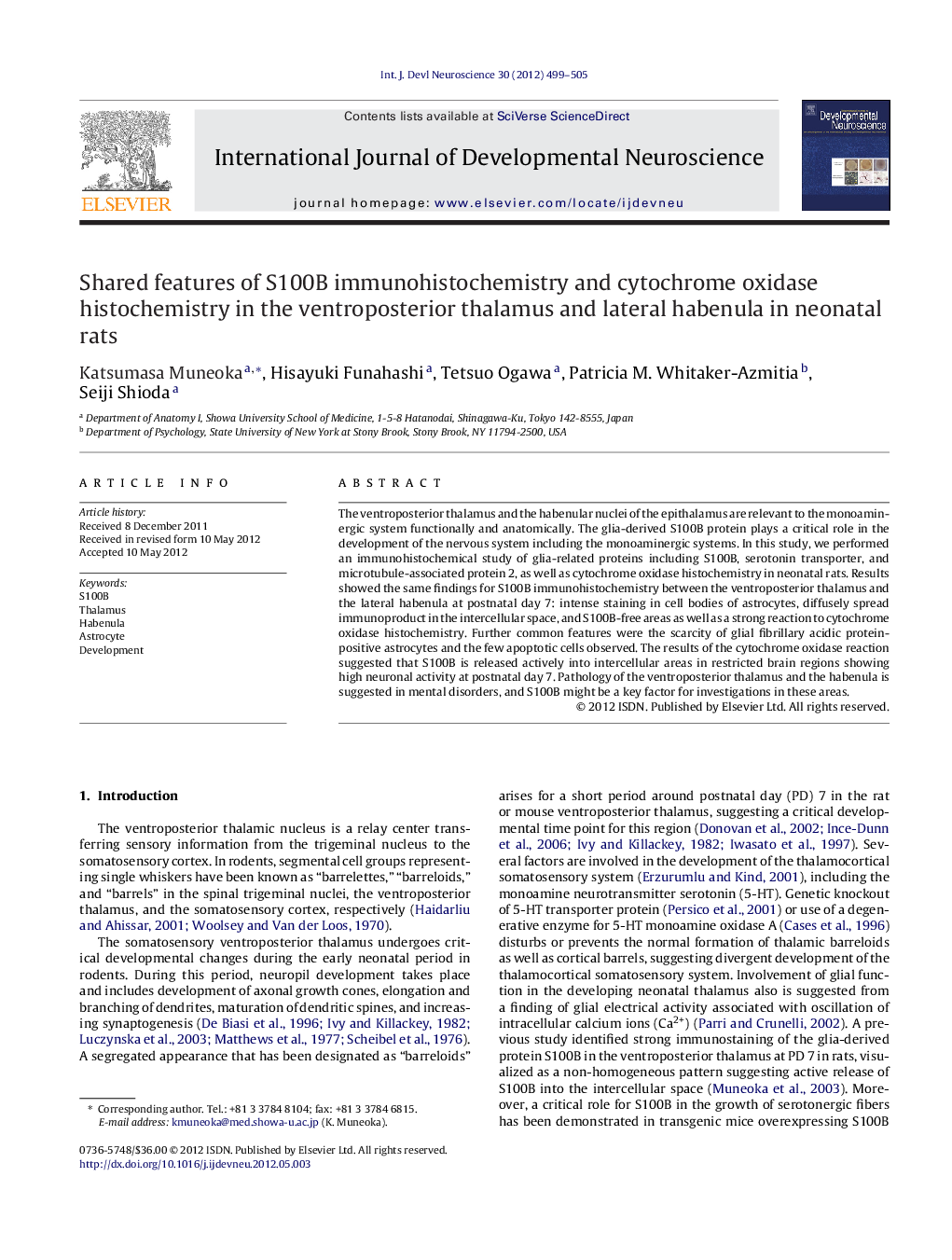| Article ID | Journal | Published Year | Pages | File Type |
|---|---|---|---|---|
| 2786220 | International Journal of Developmental Neuroscience | 2012 | 7 Pages |
The ventroposterior thalamus and the habenular nuclei of the epithalamus are relevant to the monoaminergic system functionally and anatomically. The glia-derived S100B protein plays a critical role in the development of the nervous system including the monoaminergic systems. In this study, we performed an immunohistochemical study of glia-related proteins including S100B, serotonin transporter, and microtubule-associated protein 2, as well as cytochrome oxidase histochemistry in neonatal rats. Results showed the same findings for S100B immunohistochemistry between the ventroposterior thalamus and the lateral habenula at postnatal day 7: intense staining in cell bodies of astrocytes, diffusely spread immunoproduct in the intercellular space, and S100B-free areas as well as a strong reaction to cytochrome oxidase histochemistry. Further common features were the scarcity of glial fibrillary acidic protein-positive astrocytes and the few apoptotic cells observed. The results of the cytochrome oxidase reaction suggested that S100B is released actively into intercellular areas in restricted brain regions showing high neuronal activity at postnatal day 7. Pathology of the ventroposterior thalamus and the habenula is suggested in mental disorders, and S100B might be a key factor for investigations in these areas.
► We found shared features in neonatal ventroposterior thalamus and lateral habenula. ► They were rich in S100B-positive astrocytes. ► They were poor in glial fibrillary acidic protein-positive astrocytes. ► They contained diffusely spread S100B in the intercellular space. ► They showed a strong reaction to cytochrome oxidase histochemistry.
